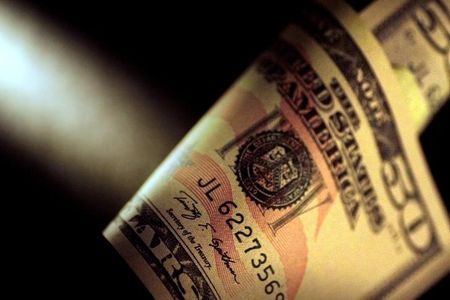Forex
Dollar gains ahead of Powell testimony; euro stabilizes

Investing.com – The U.S. dollar edged higher in early European trade Tuesday, bouncing off its lowest level in a month ahead of Fed Chair Jerome Powell’s testimony to the Senate, while the euro has held its ground amid a volatile French political climate.
At 04:45 ET (08:45 GMT), the Dollar Index, which tracks the greenback against a basket of six other currencies, traded 0.1% to 104.737, just above the overnight low of 104.622.
Dollar bounces ahead of Powell testimony
The dollar has bounced a little Tuesday, but remains on the back foot following Friday’s weak and ahead of Chair Powell’s two days of testimony before Congress, beginning later on Tuesday with the Senate and followed by the House on Wednesday.
Confidence is growing that the Fed will sanction the first rate cut of this cycle in September, with traders currently seeing about a 76% chance of a rate cut then, up from 66% a week ago, according to the CME Group’s (NASDAQ:) FedWatch Tool.
“We stand by our view that if there is any deviation from the recent narrative, it should be on the dovish side, as Powell might see the June Dot Plot revisions as too hawkish and want to fine-tune communication on the back of recent data,” said analysts at ING, in a note.
There will be more clues over the likely path of U.S. interest rates this week, with the release of key data on Thursday.
French politics to drive the euro
slipped slightly to 1.0819, not far from Monday’s nearly four-week peak of 1.0845. The single currency also dipped as low as 1.0791 that same day in volatile trading.
Traders are still trying to digest the implications of Sunday’s second round of parliamentary elections in France, with the country now facing a hung parliament and difficult negotiations to form a government.
A hung parliament in France is likely to complicate policymaking, S&P Global said on Monday, warning that more debt or a sustained slump in economic growth could trigger another rating cut.
The credit rating agency downgraded France at the end of May.
“It is likely that negotiations will prove anything but easy for President Emmanuel Macron, and markets may grow impatient. A rewidening in the OAT-Bund spread remains a tangible risk, and we see EUR/USD upside capped in the near term,” said ING.
traded largely unchanged at 1.2805, after rising as high as 1.2845 on Monday, its strongest since June 12.
Bank of England policymaker said that day he wanted to keep interest rates on hold as inflation pressures remained in the jobs market.
The Bank of England next meets at the start of August.
Yen remains weak
In Asia, traded 0.1% higher to 161.01, with the yen remaining under pressure as a swathe of weak Japanese economic readings furthered bets that the Bank of Japan will have limited headroom to raise interest rates further.
traded 0.1% higher to 7.2722, with the yuan hovering around seven-month lows, battered by increased concerns over a trade war with the West.

 Forex3 years ago
Forex3 years agoForex Today: the dollar is gaining strength amid gloomy sentiment at the start of the Fed’s week

 Forex3 years ago
Forex3 years agoUnbiased review of Pocket Option broker

 Forex3 years ago
Forex3 years agoDollar to pound sterling exchange rate today: Pound plummeted to its lowest since 1985

 Forex3 years ago
Forex3 years agoHow is the Australian dollar doing today?

 Cryptocurrency3 years ago
Cryptocurrency3 years agoWhat happened in the crypto market – current events today

 World3 years ago
World3 years agoWhy are modern video games an art form?

 Commodities3 years ago
Commodities3 years agoCopper continues to fall in price on expectations of lower demand in China

 Economy3 years ago
Economy3 years agoCrude oil tankers double in price due to EU anti-Russian sanctions























